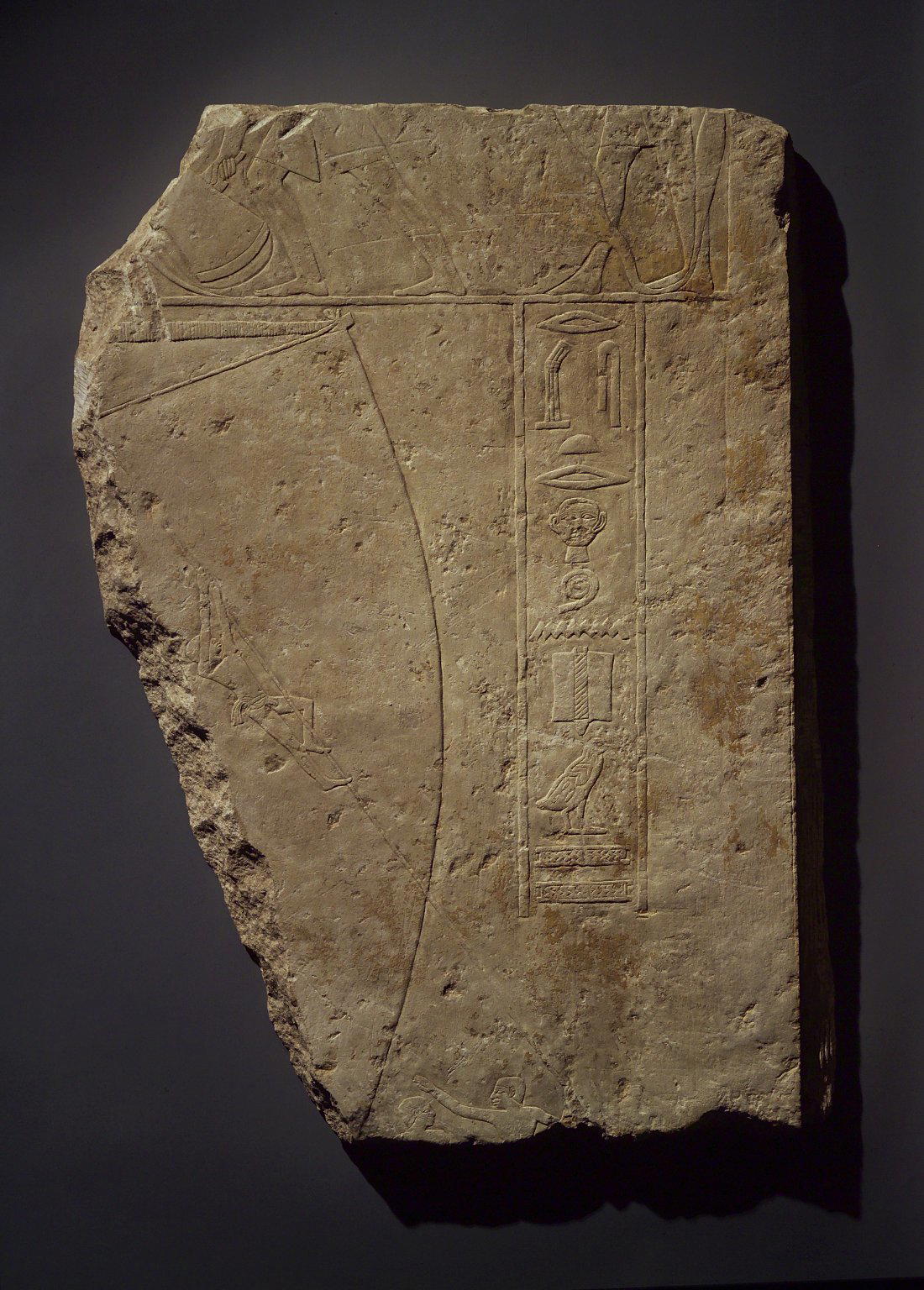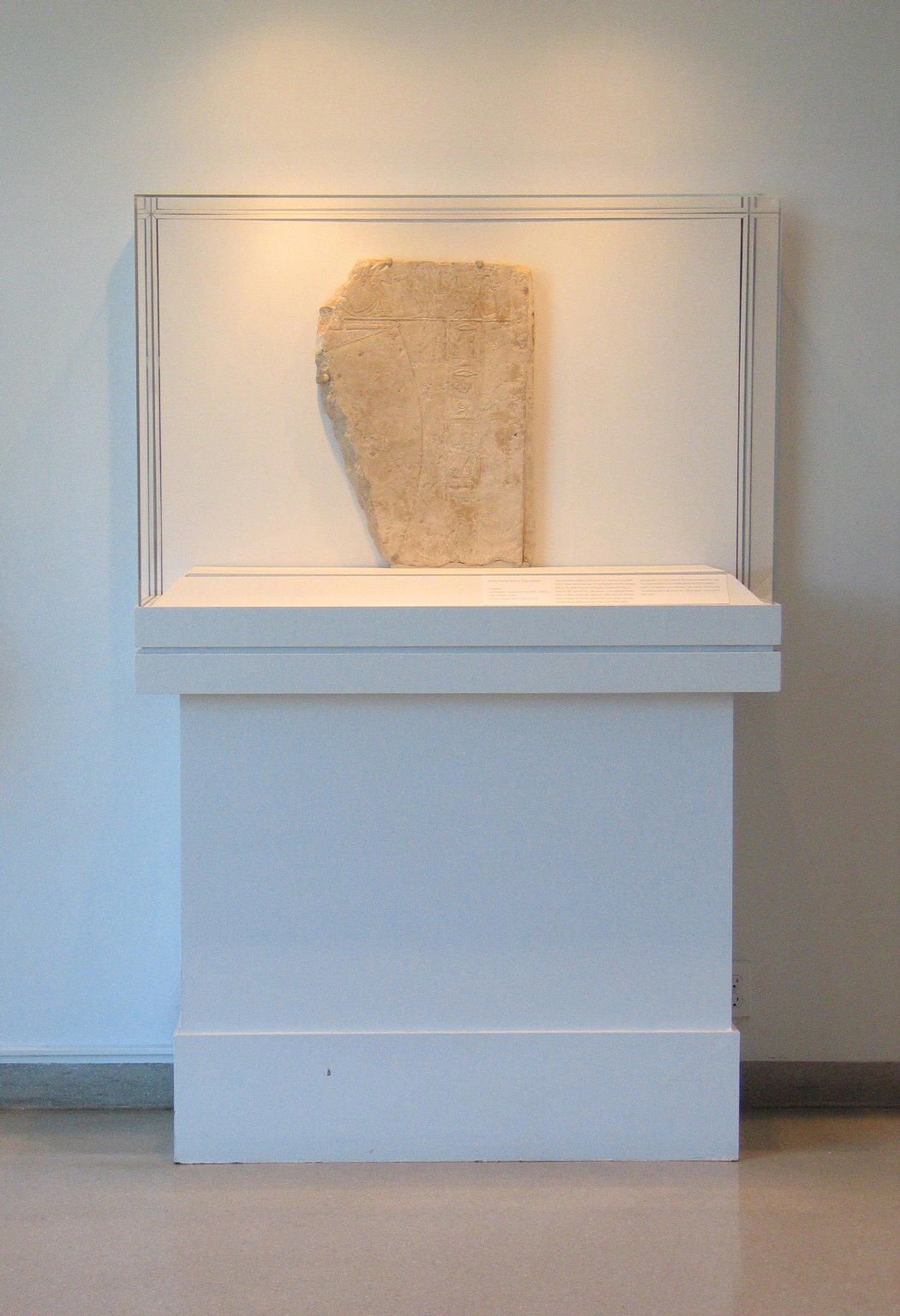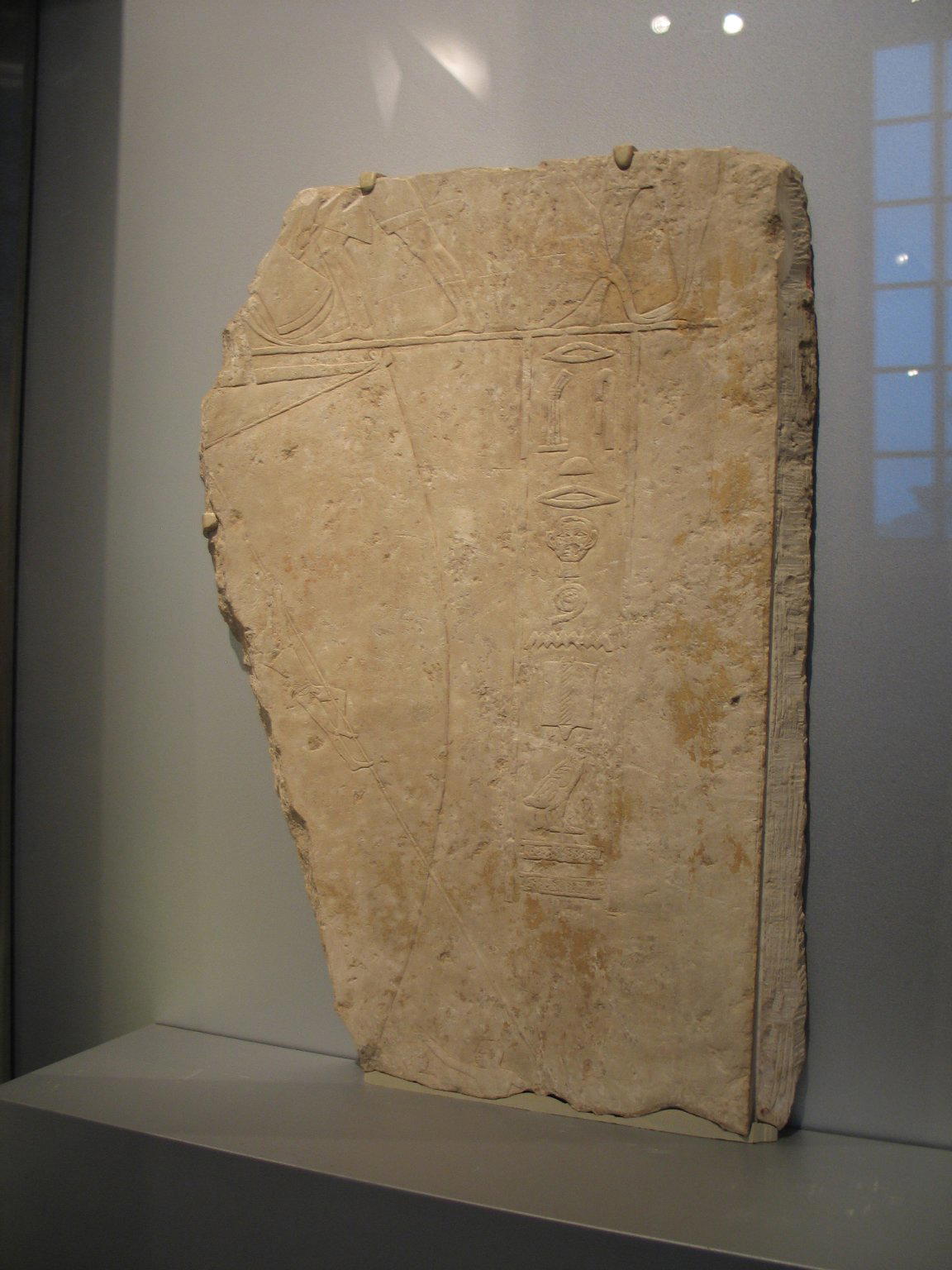Tomb Relief with a Ship Scene
ca. 2500–2350 B.C.E.
1 of 3
Object Label
The incomplete scene at the top of this fragment of a relief from a tomb shows the legs of two butchers and the massive body of the steer they are cutting up to make offerings of meat for the spirit of the tomb owner.
In the separate scene below, a sailor climbs the rigging of a billowing sail. Ancient ships traveled up the Nile (that is, south) with sails raised, because the prevailing winds came from the north. When going downstream, the crew lowered the mast and used their oars. Two crew members are partially preserved at the bottom edge. One appears to be waving at the climber and shouting the warning inscribed above him, which reads, “Look out for the rope!”
In the separate scene below, a sailor climbs the rigging of a billowing sail. Ancient ships traveled up the Nile (that is, south) with sails raised, because the prevailing winds came from the north. When going downstream, the crew lowered the mast and used their oars. Two crew members are partially preserved at the bottom edge. One appears to be waving at the climber and shouting the warning inscribed above him, which reads, “Look out for the rope!”
Caption
Tomb Relief with a Ship Scene, ca. 2500–2350 B.C.E.. Limestone, 23 3/4 x 17 5/16 in. (60.3 x 43.9 cm). Brooklyn Museum, Charles Edwin Wilbour Fund, 35.640. (Photo: Brooklyn Museum)
Title
Tomb Relief with a Ship Scene
Date
ca. 2500–2350 B.C.E.
Dynasty
Dynasty 5
Period
Old Kingdom
Geography
Place made: Saqqara, Egypt
Medium
Limestone
Classification
Dimensions
23 3/4 x 17 5/16 in. (60.3 x 43.9 cm)
Credit Line
Charles Edwin Wilbour Fund
Accession Number
35.640
Frequent Art Questions
Saw many ship reliefs but never one with sailors in the rigging! Is this the only example you know?
 Great detail! More images of sailors in the rigging are known to scholars, but not many of them seem to have made it to museum galleries. They tend to come from kings' funerary complexes. This example is especially interesting, having come from the Old Kingdom period. I know of a few more from the Middle Kingdom. Relief carving and funerary temple decoration was at a real peak then.Thanks. Valley of the Kings was spectacular, but they rotate open tombs and we saw no other sailors in rigging that I remember. The boat museum at Giza was fantastic as well (I build boats and am always interested in naval architecture).Ah! The Valley of the Kings dates to the New Kingdom and later, tomb decoration had changed quite a bit by then!You get more of the daily life scenes in the Middle Kingdom especially!
Great detail! More images of sailors in the rigging are known to scholars, but not many of them seem to have made it to museum galleries. They tend to come from kings' funerary complexes. This example is especially interesting, having come from the Old Kingdom period. I know of a few more from the Middle Kingdom. Relief carving and funerary temple decoration was at a real peak then.Thanks. Valley of the Kings was spectacular, but they rotate open tombs and we saw no other sailors in rigging that I remember. The boat museum at Giza was fantastic as well (I build boats and am always interested in naval architecture).Ah! The Valley of the Kings dates to the New Kingdom and later, tomb decoration had changed quite a bit by then!You get more of the daily life scenes in the Middle Kingdom especially!
Have information?
Have information about an artwork? Contact us at


